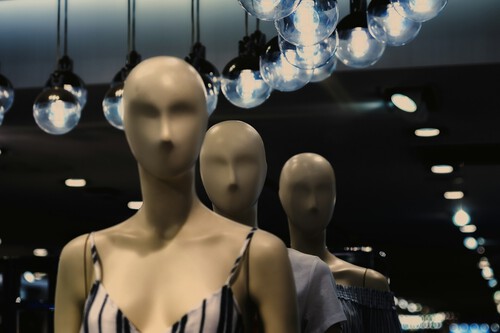A year ago, an unprecedented contest dominated the front pages of several media outlets: Miss AI. The contestants were created with AI models. They had impossible bodies—no wrinkles, no pores, and no history. Promoted by the Fanvue World AI Creator Awards platform, the event sparked a flood of comments and opened a deeper debate: Are we willing to accept something that doesn’t even exist as an ideal of beauty? Is the real body starting to be seen as a flawed version of a digital rendering?
Unrealistic expectations abound. According to The Columbus Dispatch, plastic surgeons like Jaclyn Tomsic and Craig Lehrman have noticed a troubling trend in their clinics: patients who arrive with AI-generated images and request impossible procedures. “In AI, you can make your anatomy whatever you want,” Tomsic, a maxillofacial surgeon in Cleveland, said.
Lehrman, a plastic surgeon at Ohio State University’s Wexner Medical Center, said older patients have brought in edited photos of celebrities. “They ask me, ‘Why don’t I look this good?’ And it’s like a 35-year-old, and it’s obviously manipulated, but people get these expectations and goals that are really detrimental,” he said.
Both doctors said they now spend more time explaining why they can’t replicate what AI promises. A scalpel can’t override biology, bone structure, and age.
The unrealistic expectations created by filters, apps, and image generators can lead to frustration and harm. Some people insist on undergoing surgery repeatedly in pursuit of an unattainable ideal. Doctors also warn of psychological risk: People who fail to look like these artificial images may become obsessed, undergo multiple surgeries and live in constant frustration. “I think that’s going to lead to a lot of unhappy people and chasing this imaginary dream,” Lehrman said.
This phenomenon goes beyond surgery. It also affects how people relate to their image. It has become commonplace to ask AI to evaluate one’s appearance and suggest facial improvements. The point isn’t what AI says—but that its judgment holds so much weight in how we perceive ourselves.
Fiction made flesh. In the past, manipulating an image required technical skill or tricks with lighting and makeup. Today, anyone can look like a supermodel in seconds using a free app. AI doesn’t just retouch photos—it creates faces from scratch. According to Lehrman, AI has advanced to the point where distinguishing real images from manipulated ones is increasingly difficult.
To counter the trend, the American Society of Plastic Surgeons created a gallery of real before-and-after photos to fight misinformation. But it’s an uneven battle: Every day, algorithms generate millions of fake, stylized, and standardized images.
Advances and dilemmas. The study “Artificial Intelligence in Plastic Surgery, Where do We Stand?” reviewed 96 papers on AI’s role in the field. While AI has proven useful in diagnosing skin conditions, surgical planning, and predicting complications, the study also warned of ethical risks, lack of regulation, and algorithmic bias.
One major concern: Many AI models are trained on limited datasets, leading to racist, classist, and ableist outcomes.
The bias behind AI. Algorithms are trained on millions of images that reinforce thin, cisgender, and youthful standards. As the article “Ethics for AI in Plastic Surgery: Guidelines and Review” warns, AI may exacerbate inequality by replicating stereotypes and rendering other body types invisible.
Tech experts have raised similar concerns. In her book Race After Technology, Ruha Benjamin writes, “Algorithmic discrimination does not need hatred to function; it only needs data from the past.”
Likewise, Algorithms of Oppression by Safiya Noble shows how commercial and racist logic is embedded in search engines and recommendation systems. Far from democratizing beauty, technology seems to narrow its definition even more.
The problem isn’t the idea of beauty itself. As bell hooks noted, “Representation matters.” But when AI, trained on exclusionary patterns, begins to decide which faces we see and which bodies are shown, it’s not just an aesthetic shift. It’s a deeper redefinition of what we consider desirable, possible, and human.
The question is no longer “What is beautiful?” but rather: “What are we willing to accept?”
Image | Paul Zoetemeijer (Unsplash)
Related | When ChatGPT Is Your Only Friend: This Is How AI Models Are Replacing Interpersonal Relationships




View 0 comments